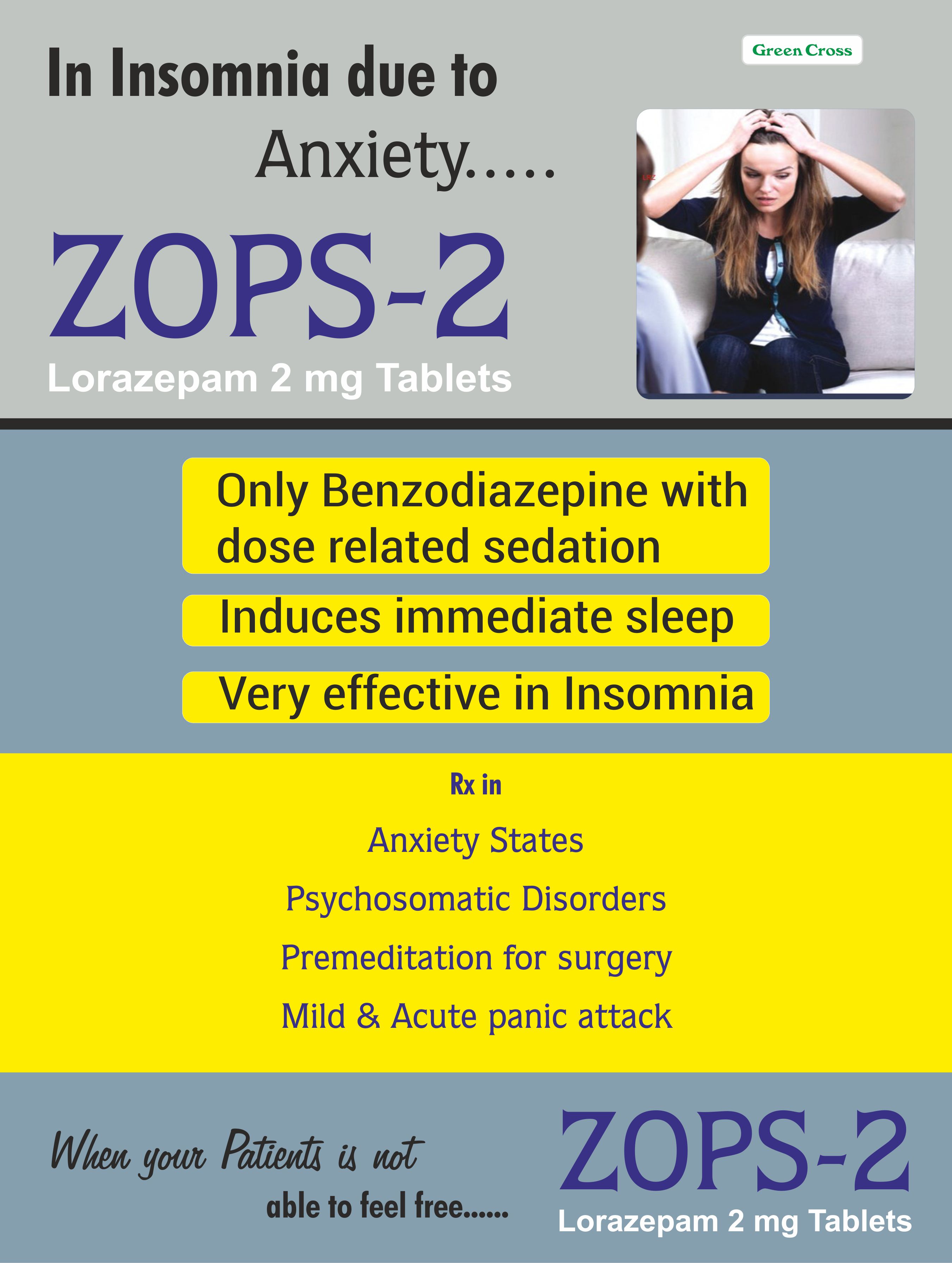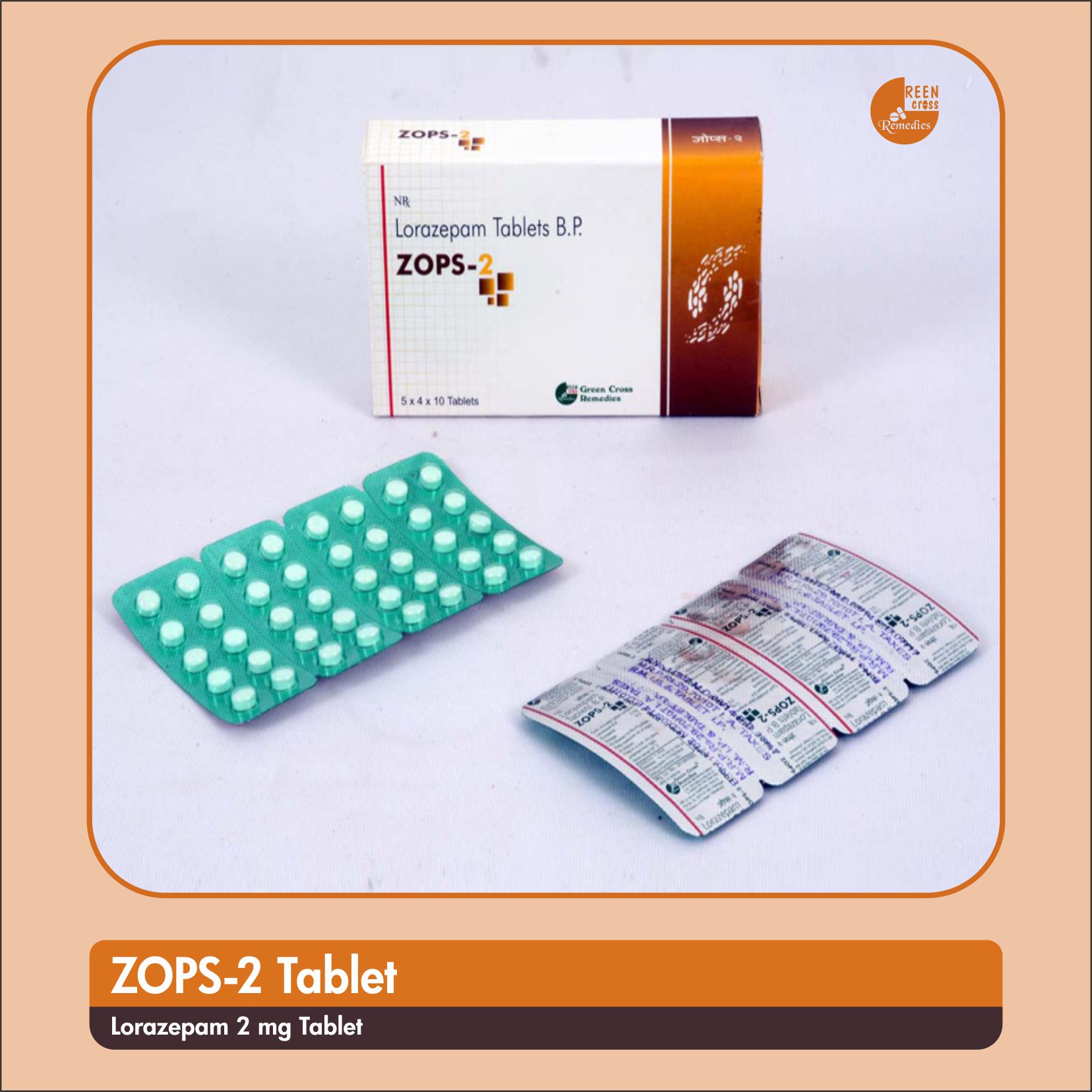ZOPS 2 Tablet

Lorazepam 2 mg Tablet Use, Indication, Side Effects, Dosage, Mechanism of Action, Price, Contra-Indications, Drug Interactions....
ZOPS 2 Tablet (Lorazepam 2 mg)
Use and Indications:
Zops 2 Tablet (Lorazepam) is primarily used for the treatment of anxiety and related conditions.
- Anxiety Disorders: To manage generalized anxiety disorder (GAD) and short-term anxiety.
- Panic Disorder: To alleviate acute panic attacks.
- Insomnia: When it is caused by anxiety or stress.
- Preoperative Anxiety: To calm patients before surgery.
- Seizures: Used as a part of the management of acute seizures (such as status epilepticus).
- Alcohol Withdrawal: To reduce symptoms of alcohol withdrawal.
Mechanism of Action:
Lorazepam works by enhancing the effect of GABA (gamma-aminobutyric acid), which is a neurotransmitter that inhibits neural activity. By increasing GABA activity, Lorazepam produces a calming effect on the brain and nervous system. This helps to reduce anxiety, promote sedation, and prevent seizures.
Dosage:
- Adult Dosage for Anxiety: 1-3 mg per day, divided into 2-3 doses.
- Adult Dosage for Insomnia: Typically, 2-4 mg before bedtime.
- Adult Dosage for Panic Attacks: Usually, 2 mg twice a day.
- Preoperative Sedation: 1-2 mg before surgery.
Dosage varies based on the individual’s medical condition, age, and other factors. It is essential to follow the specific dosing instructions provided by the healthcare provider.
Side Effects:
Common side effects of Lorazepam include:
- Drowsiness or sedation
- Dizziness or lightheadedness
- Fatigue
- Blurred vision
- Headache
- Muscle weakness
More severe side effects may include:
- Memory problems or confusion
- Coordination problems
- Respiratory depression (especially when combined with other CNS depressants)
- Mood changes or depression
- Addiction or dependence (especially with long-term use)
Seek immediate medical attention if any of the severe side effects occur.
Contraindications:
Lorazepam should not be used in the following conditions:
- Hypersensitivity: Known allergy to Lorazepam or other benzodiazepines.
- Severe Respiratory Insufficiency: In patients with severe breathing problems.
- Sleep Apnea Syndrome: Where breathing stops during sleep.
- Acute Narrow-Angle Glaucoma: A condition that affects the eyes.
- Severe Hepatic Impairment: Patients with severe liver dysfunction.
Drug Interactions:
Lorazepam can interact with several drugs, leading to enhanced sedative effects or potentially dangerous side effects. Some notable interactions include:
- Alcohol: Excessive sedation and respiratory depression can occur when taken with alcohol.
- CNS Depressants (e.g., barbiturates, other benzodiazepines, opioids, or antipsychotics): Can increase sedation, leading to severe drowsiness or respiratory issues.
- Antidepressants: Such as fluoxetine or paroxetine, this can alter the metabolism of lorazepam.
- Anticonvulsants: When combined with drugs like Phenytoin or carbamazepine, the effect of Lorazepam may be altered.
- Cimetidine: An antacid that can increase Lorazepam levels in the blood.
Always inform the prescribing doctor about other medications being taken, including over-the-counter drugs and supplements.
For Use of registered medical practitioner or a hospital only

